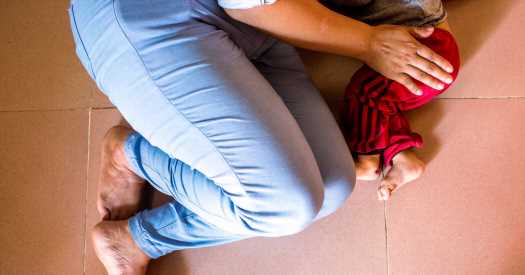How to Lower Deaths Among Women? Give Away Cash.

The News
Cash grants made directly to poor families or individuals have led to fewer deaths among women and young children, according to a new analysis of more than 7 million people in 37 countries.
In countries that began making such payments, deaths among women fell by 20 percent, and deaths among children younger than 5 declined by 8 percent, researchers reported on Wednesday in the journal Nature. The impact was apparent within two years of the programs’ start and grew over time.
The reductions in death rates were similar whether the funds came with certain conditions, such as school attendance, or whether they had no strings attached, the analysis found. Programs that covered bigger shares of the population or distributed larger amounts of cash produced even greater benefits.
Countries with poor health care and high death rates had the biggest drop in deaths.
Why It Matters: Poverty is a big killer.
In 2019, more than 8 percent of the world’s population lived in extreme poverty, subsisting on less than $2.15 per day, and about half the world on less than $6.85 per day. Poverty has insidious effects on housing stability, education, health and life expectancy.
The pandemic drove 97 million additional people into extreme poverty in 2020, according to a World Bank estimate, prompting more countries to start cash transfer programs. Of 962 such programs worldwide, 672 were introduced during the pandemic.
Direct cash transfers have been shown to improve school attendance, nutrition and use of health services. A few single-country studies have linked the payments to reduced death rates. But it was unclear whether those trends applied on a global scale.
“There’s some concerns about whether these programs are sustainable, whether governments can and should pay for them,” said Harsha Thirumurthy, an economist at the University of Pennsylvania and a co-author of the analysis.
Background: Small payments, big impact.
More than 100 low- and middle-income countries have introduced cash transfer programs designed to mitigate poverty, though they differ widely in how much they pay, how often and to whom.
The new study is the first to examine the effect of cash transfers on death rates worldwide, the researchers said. They collected information on these programs between 2000 to 2019 in 29 countries in sub-Saharan Africa, one in northern Africa, four in the Asia-Pacific region and three in Latin America and the Caribbean.
The data included information on more than 4 million adults and nearly 3 million children. Roughly 300,000 deaths were recorded during the study. Recipients received between 6 percent and 13 percent of the per capita income in a particular country, often much less than $100.
“These are not amounts that are anywhere near as large as some of the amounts we’re talking about in the U.S. when it comes to guaranteed income programs,” Dr. Thirumurthy said.
Still, the findings are relevant even for high-income countries, said Audrey Pettifor, a social epidemiologist at the University of North Carolina at Chapel Hill who studies cash transfers for H.I.V. prevention and women’s health.
Donors often worry that beneficiaries may misuse the funds to buy alcohol, junk food or other nonessential items, but “the data just doesn’t back that up,” she said.
What’s Next: The benefits may extend to entire communities.
The researchers could not identify the beneficiaries, so they analyzed population-level death rates. The findings suggest that cash transfers may be helpful not just to women, but to families and entire communities.
“These social protection programs actually account for the vast majority of the income” in households in places like South Africa, Dr. Pettifor said. “One would expect these spillover effects.”
Berk Özler, a developmental economist in the World Bank’s research division, offered an alternate explanation. Cash transfers are often accompanied by improvements to health care services or other infrastructure that helps communities, he noted.
“Maybe it’s not the direct effect of people having more cash in their pocket,” he said.
The study did not look at adults older than 60 or at distinct features of the programs, such as duration or frequency of the payments, whether the beneficiaries are men or women, how the money is delivered or whether it is bundled with counseling or education.
“I do think it’s useful to look at that in future work,” Dr. Thirumurthy said.
Apoorva Mandavilli is a reporter focused on science and global health. She was a part of the team that won the 2021 Pulitzer Prize for Public Service for coverage of the pandemic. @apoorva_nyc
Source: Read Full Article
